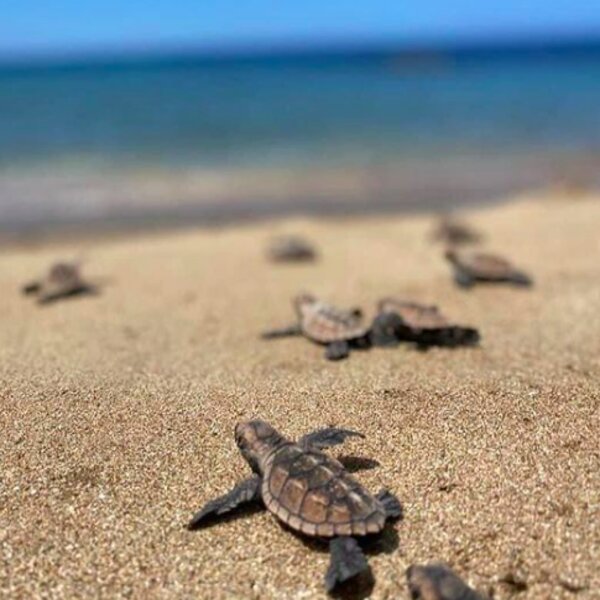Animals in Jamaica aren’t difficult to spot. There’s a diverse ecosystem that comes with a large number of endemic species. Of course, some are easier than others to track down. You’ll possibly get a little tired of seeing the resident mongooses, but they do fill the gaps between the rarer sightings. Showy standouts include the colourful plumage of the island’s hummingbirds, especially Jamaica’s national bird. But with skinks, bats and tropical fish all laying claim to your time, your wildlife itinerary might start to look a little crammed. We’ve picked out a few key critters from Jamaica’s wildlife list that you won’t want to miss.
Birds
Pack your best utility trousers and binoculars, Jamaica’s impressive roster of endemic birds is ready to impress. 28 unique species, including Jamaica’s national bird, are just waiting to be spotted. And boy are there some showstoppers. On the flashy end of the avian spectrum, it’s hard not to be wooed by the small, but ever so vibrant, Jamaican Tody. Its green feathers blend in too well with the environment, so you’ll be on the lookout for the Tody’s tiny red chin. The Jamaican Mango Hummingbird sports some seriously impressive fluorescent pink tail plumage – though they can be a tough spot. If you fancy getting nocturnal, the Jamaican Owl is a ‘must see’. And Jamaica’s national bird? It’s the swallow tail hummingbird. You’ll know it as soon as you spot the iridescent green feathers and the long streaming tail feathers on the male bird. Just stunning.

Orbzii tip: For $20 you can schlep up to Rocklands Bird Sanctuary. It’s a heck of a taxi ride, and can be a pricey trip. Your reward? Hummingbirds will land on you to drink the sugar water provided by the sanctuary.

Reptiles
Animals in Jamaica can’t always be filed in the cute and cuddly section of the island’s wildlife rundown. Geckos, skinks, lizards, snakes and crocs are sunning their scales on the island paradise too. Things start out fairly small with some more endemic species to keep an eye out for. The Jamaican Iguana and Jamaican skink are fairly easy spots – though might do little to raise your adrenaline levels. The Jamaican Blue Mountain Anole is only found in the blue mountains, so a keen desire to track one down is in order if you’re going to succeed on that front. The Jamaican Bluefields Anole has a rather impressive throat pouch (or dewlap) photographers are bound to want to snap.
Then we move into snake territory and wildlife watchers of a nervous disposition might feel more comfortable in the mammal section. The Jamaican Boa clocks up around 6ft of hefty muscle and well, we can all just be thankful they’re not venomous. Jamaican Sliders are chunky freshwater turtles that, while harmless, we wouldn’t want to be sharing a natural pool with. Racerlets, dwarf boas and Jamaican geckos are all worth keeping an eye out for. Jamaican wildlife possibly peaks with the American crocodiles of the Black River. They can reach up to 20ft, and though they are the most daunting, these are said to be the most laidback croc species.

Orbzii tip: Black River Safaris do offer the chance to get closer to the crocs. Perhaps a little too close. Some operators ‘interact’ with the wild crocs and allow guests to handle baby crocs. Which may feel a little less wild to those looking for an authentic wildlife encounter.

Mammals
At first sight, the prevalent mongoose population might seem a welcome fluffy sight compared to the other animals in Jamaica. But this introduced pesky predator is responsible for chomping its way through the island’s indigenous reptiles. You’ll spot them almost everywhere, so no need to make a special trip. For something a little more rare, turn your eyes to the skies once more. Parnell’s Mustached Bat likes to roost in Jamaica’s caves while the Jamaican Red Bat prefers foliage and trees. The Jamaican Flower Bat is the island’s success story, of sorts. After 20 years without a sighting, the bat was declared extinct in 2005. Now, researchers have found a new roost of flower bats and have started to research this vulnerable species. There are over 20 bat species on the island that feed on everything from pollen and fruit to fish and spiders.
Orbzii tip: For a simple way to see some of the island’s bats, pay a visit to the Green Grotto Caves. Just one little tip, keep your mouth closed when you look up at the roof!
Sea Life
Oof, this could end up being a long, long list of colourful, tropical and, occasionally a little menacing, sea life. We’ll stick to the big ticket items though to both save you time and hold back a few surprises for your snorkel or scuba adventures. Blue marlin, sharks and yellowfin tuna are the deep sea spots you might want a scuba tank and a professional or two around for. Blue tangs and clownfish deliver plenty of Finding Nemo vibes for any newbie sea explorers having their first crack at sea spotting. But, as with the rest of Jamaica’s wildlife, you can think bigger for some really jaw-dropping sightings. Hawksbill and Green Turtles are the island’s native sea turtles, with beaches providing much needing nesting grounds. Hatchlings appear along the coasts in the Montego Bay and Ocho Rios areas from May to December. And, if you’re up for a little hard work, conservation volunteers can reach out to groups such as the Treasure Beach Turtle Group to see if they need a helping hand or two.

Orbzii tip: There is the chance to see manatees in Jamaica, though all may not be as it seems. There are three living in the Alligator Hole River, though they may have been trapped there for visitors to see. Perhaps swerve the river and keep your eyes peeled along the coast instead?



















